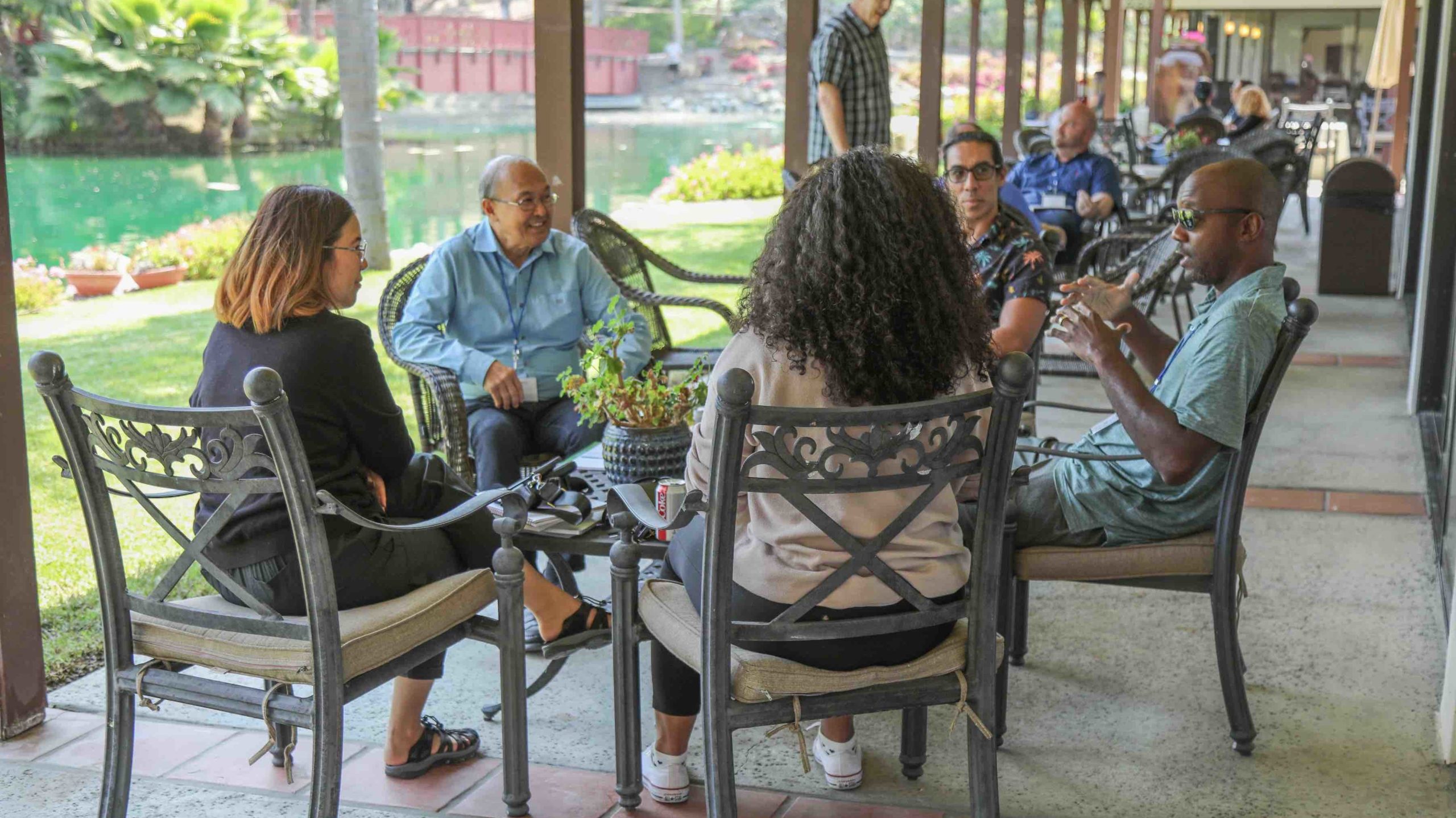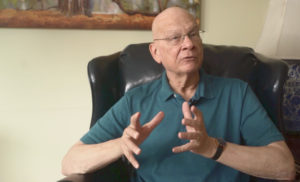The Case for Renewal
1. The Church needs it. The American Protestant church is in deep need of spiritual and institutional renewal. The mainline-liberal church has been in precipitous decline for 50 years and only its historically accumulated assets of endowments and real estate have kept it from disappearing altogether. Now the conservative-evangelical church is also in decline and faces an enormous exodus, especially of its young people. The black church is facing many highly complex generational, theological, and institutional challenges. Never in American history has the church been weaker or has the American population been more disconnected from religion. Never have all the various branches of U.S. Christendom been so weak all at once. Even the Catholic church is facing crises of shrinking parishes and shrinking numbers of clergy. (This has been discussed in detail in earlier articles.)
2. The country needs it. While many secular voices see this unprecedented deterioration of the church an unmixed blessing, a number of analysts and social theorists point out that religions bring things into a society that cannot be supplied from other sources—consensus of moral intuitions, strong community ties, meaning in life beyond material circumstances, and a powerful hope for the future.
To name only one such thinker, consider the thesis of Robert Bellah in his classic, Habits of the Heart. [] [1] Robert Bellah, et al, Habits of the Heart, With a New Preface: Individualism and Commitment in American Life, University of California Press, 2007. Bellah shows that the social history of the United States makes it perhaps the most individualistic culture in the world. No culture more than American culture elevates the interests of the individual over those of family, community, and nation. No culture more than the U.S. culture attributes one’s character, identity, and life conditions strictly to individual decisions and choices. In other words: If you are poor or marginalized, it’s always your fault—you could have avoided that if you made better choices and took more initiative. Yet for two centuries the religious nature of the American population counter-balanced this individualism with denunciations of self-centeredness and calls to love your neighbor. The church demanded charity and compassion for the needy; it encouraged spouses to stick to their vows, and to confine sexual expression to only inside marriage. Now, as religion declines, the “guard-rails” are gone and we see more social breakdown. Bellah makes the case that American individualism, now largely freed from the resistance of religion, is headed for to social fragmentation, economic inequality, family breakdown, and many other dysfunctions. [] [2] Bellah’s original work was published in 1985, then was re-issued with a new preface in 1996, and finally re-issued with another new preface in 2007. It is helpful to read all three prefaces to see how Bellah saw continued social deterioration in the decades after his initial study.
In another recent example, Professor Carolyn Chen of Berkeley, in a New York Times article “When Your Job Fills In For Your Faith, That’s a Problem” [] [3] Carolyn Chen, “When Your Job Fills In for Your Faith, That’s a Problem”, New York Times, May 24, 2022. shows that when religion recedes, people look for a God or faith-substitute, essentially deifying something else. When people find their significance, security, and meaning in life in their work, it leads not only to workaholism and anxiety, but also to ethical compromises, to a lack of community and civic engagement, and to a more dog-eat-dog, inhumane economy. Her conclusion is that when religion recedes and we make career and work into a new religion, we all suffer. She found that very religious people were able to avoid these problems. In this article, we see an individual case study of what Bellah saw writ large across the face of our fracturing culture.
3. The love of God requires it. The decline of the church in the U.S. should concern everyone. But Christians seek spiritual renewal of the church not because they see religion as having social utility, nor because they just want to shore up their own institutions.
Rather, we believe Christianity is relevant to society because it is true—it is not true because it is relevant. Christians do not believe in and promote the faith because it brings so much hope (though it does) or because it fills you with joy (though it will) or because it creates deep and strong community (though it can) or because it can heal our society of many ills (though it might). Rather, Christians seek renewal of the church as a way to love and serve the One who saved us. Jesus told us to “Go and make disciples of all nations… baptizing them… and teaching them” (Matthew 28:19-20). America is one of the nations—there are no exceptions. We know church renewal is what Jesus wants, because he said “I will build my church,” and we have this confidence that “the gates of hell will not overcome it” (Matthew 16:18). Christians seek the renewal of the church for the love of God as well as for the love of their neighbor. Therefore it is an absolute imperative.
The Vision for Renewal
Our vision cannot be simply for a restoration of churches and Christian institutions to their former states of strength. That is to mistake means for ends. Our vision should be that the astonishing biblical possibilities for the church as the community of the Spirit would be realized in U.S. society in ways it never has before. The church has been given divine power to radiate the infinite glory and goodness of God in our lives and relationships (2 Peter 1:3-8). It has the capacity to be a new humanity—a community of surpassing beauty (Ephesians 2:14-18; 4:15-16). Under the leadership of Christ’s Spirit, churches have the ability to make their surrounding communities far better places to live (Matthew 5:13-16; Luke 10:25-37; Galatians 6:10), so that many are drawn to God’s beautiful glory (1 Peter 2:11-12; cf. Deuteronomy 4:5-8).

We envision a day when –
1. Cities become filled with flourishing neighborhoods that point to the churches within them as a crucial source of their life and strength.
2. Every U.S. community is honeycombed with home fellowship groups and house churches that build up the Christians within them, welcome non-believers, and serve their neighbors.
3. New churches are being planted twice as fast as churches are closing, and 2/3 of the people in the new churches are formerly unchurched and non-believers.
4. The Protestant church which holds to the historic, orthodox faith, begins to grow faster than the U.S. population.
5. Large percentages of Christians become able to speak about their faith in their daily relationships in ways that are not perceived by most of the recipients as offensive or even awkward, but instead are received as helpful and positive.
6. The movement of the young out of the churches would be completely reversed. Children and youth in the church are equipped to see not only the beauty of the historic faith, but the deeply inadequate alternative identities, narratives, and answers provided by the culture.
7. Christians would become famous for being the ones who show up in force first to help victims whenever there is any disaster.
8. Christian churches would be known as the most racially and culturally diverse institutions in society. The ‘face’ of the renewed Christian church toward society—its leading voices—are highly diverse ethnically, and the American church is tightly connected to the global church.
9. The Protestant gospel of salvation by grace alone through faith alone is lifted up prominently and beautifully across many denominations, escaping the creeping moralism endemic to the church over the ages, yet is done so in a way that encourages deep life change into Christ-like holiness.
10. Many denominations and traditions flourish, each grateful and confident in its distinctiveness, and yet highly cooperative and collaborative across denominational lines, without doctrinal dilution or compromise.
11. The church would become publicly recognized as a refuge for sufferers, known for its ability to help people through grief, pain, and loss.
12. An increasing number of Christian artists—working out both the realism of the Christian worldview about sin and the confident expectation of restorative grace—produce high-quality stories, music, and visual art, all so that (a) more people see the beauty and intuitive plausibility of Christianity and at the same time, (b) people across our society will increase in hope.
13. There would be a robust, respected, and growing community of intellectuals and scholars that hold unashamedly to historic Christian doctrine who are (a) active in every academic field of inquiry, producing scholarship that contributes to and alters the field, (b) a growing presence in universities, and (c) an entire alternate intellectual economy of study centers, think tanks, academies, periodicals, and publishing.
14. The church becomes a visible, respected ‘sexual counter-culture’—
- It is a community in which sexuality is not a consumer good conducted on a selfish, cost-benefit basis, but a means of self-donation inside a covenant.
- It is a community in which the health and durability of marriages and families is obvious.
- It is a community for singles, and especially for women, of far greater emotional safety and clearer expectations in romantic relationships. It is a place that is known to reject modern superficiality in spouse-seeking—i.e. far less emphasis on looks and money.
- It is a community in which Christian men and women who describe themselves as attracted to the same sex, but who wish to live according to the biblical vision and ethic for sex are nurtured and respected.
15. Christians would be known for their just use of power, so that:
- In business, Christians are known to be less selfish and ruthless and more generous to peers, employees, and customers.
- In social entrepreneurship, Christians are known to be fueling an explosion of creative and effective nonprofits that target every social problem, leading to a measurable decrease in the poverty rate and improvements in other statistics of social well-being, and that Christians would be famous for being those most given to charitable giving and volunteering their time for those in need.
- In politics and government, Christians would be known for seeking the common good rather than their own electoral interests, and for being cognizant of the importance of government policies for a just society.
- A growth in church planting and church renewal among the poor would occur, supported non-paternalistically by the broader church and led by the poor themselves. This would be seen by society and credited with improvements in social indicators.
All of these changes would lead to a more just distribution of money and power, and people in general would have more control over their neighborhoods and their lives.
16. Christians would be known for their uncompromising stand for truth and their critique of false beliefs and narratives, and at the same time be known for their civility and for their commitment to creating a truly pluralistic society in which all are free to voice and practice their worldviews and faith.
- Christians would lead the way to a growing civility in society, based on an attitude of mutual respect, welcome, and kindness toward those who deeply disagree in moral convictions and beliefs.
- Christians would be known for being the strongest promoters of warm dialogue and intelligent debate, of defense of freedom of speech and conscience.
The vision cannot be simply for a restoration of churches and Christian institutions to their former states of strength. That is to mistake means for ends. Our vision should be that the astonishing biblical possibilities for the church as the community of the Spirit would be realized in U.S. society in ways it never has before.
The Escapes of Renewal
There are many pitfalls for would-be renewal movements. These dangers must be recognized and avoided. The path to church renewal must avoid mistakes that both liberal and conservative denominations and institutions have been making and continue to make. [] [4] Some may ask—if we cannot look to mainline or evangelical Protestantism for the renewal of the U.S church, should we look to the Catholic church? But not only had Catholicism had its own deeply discrediting sex abuse scandal, but it is facing the same sharp decline. Ross Douthat writes: “In recent years we [Catholics] have seen theological and ideological swings from papacy to papacy, widening gulfs between different national churches, and doctrinal conflicts dividing even the college of cardinals under the current pontiff. At the mass level (so to speak), in many formerly Catholic countries and regions, from Western Europe to Latin America, Catholicism has experienced an exodus that exceeds the crises of the Reformation.” “The Shadow of Failure: A Reply to Edmund Waldstein”, First Things, June 2022. For several decades, the mainline church’s shrinkage corresponded with the growth of evangelicalism. In the eyes of many, the lesson was simple—liberalism didn’t work in religion, but conservative orthodoxy did. However this narrative is no longer plausible now the evangelical church is also in decline. Over the last three years, the Southern Baptist Convention lost over 1 million members. [] [5] https://www.christianitytoday.com/news/2022/may/southern-baptist-membership-decline-covid-pandemic-baptisms.html
The path to church renewal now must avoid mistakes that both liberal and conservative denominations and institutions are making. To use the well-known metaphor from Greek mythology, there are monsters on either side. Sailors could not sail so far away from Scylla that they fell into the clutches of Charybdis. Today for the U.S. church there are several competing “monsters” which must be carefully avoided.
Avoiding “Scylla”
In my first article, I showed the many reasons why liberal/progressive Christianity is no way forward and must be avoided by any church renewal project. Liberal Christianity rejects historic Christian doctrines which have been universally believed across all centuries and cultures. Many believed this re-definition of Christianity was the only way for it to survive in a modern, scientific age, but that was a mistake. Liberal Protestantism ended up being so identical to modern liberal secularism—with essentially the same beliefs about reality, the same level of uncertainty about God’s nature and ways, and the same moral values—that it offered nothing distinct to secular people that modern culture didn’t already provide.
Yet today many ex-evangelicals, rightly indignant over the egregious failures of the conservative church, are seeking to avoid the Charybdis of evangelicalism by sailing, as it were, right into the arms of the Scylla. Those that don’t ‘de-convert’ completely head for mainline Protestant churches because of the doctrinal freedom (or fuzziness, depending on your perspective) and the progressive political agenda. But this tight alignment of the mainline church with politics is not the only factor that led to its decline, but it is also one of the reasons for the decline of the evangelical church as well.
Avoiding “Charybdis”
In my second article, I showed that the evangelical decline has many roots. Since the early 19th century, American evangelicalism has had a strongly anti-intellectual, anti-elitist bias, greatly distrusting of higher education, scholarship, and science.
[]
[6] Nathan O. Hatch, The Democratization of American Christianity, Yale, 1989.
And all conservative religion is naturally prone toward legalism and self-righteousness—to “dead orthodoxy.”
[]
[7] “Live Orthodoxy” in Richard Lovelace, Dynamics of Spiritual Life: An Evangelical Theology of Renewal (Expanded Edition), IVP, 2020, 271-288; Sinclair Ferguson, The Whole Christ: Legalism, Antinomianism, and Gospel Assurance―Why the Marrow Controversy Still Matters, Crossway, 2016.
These tendencies have led to three serious, discrediting mistakes in the eyes of the public.
First, a significant and highly visible number of evangelicals have wed Christian faith to the specific political agenda of right-wing American populism. Many younger adults—and especially non-whites—see evangelicals as reducing Christianity to a mere power bloc. [] [8] Ironically, evangelicals have made the same mistake with conservatism and the Republican party that mainline Protestantism made earlier, when it wed itself to liberalism and the Democratic party.
Second, evangelicals have adopted a shrill, harsh tone toward modern culture that shows no desire to attract or evangelize. It has put out a ‘not welcome’ sign to more than half of the country—the liberal and secular half. It can only appeal to the shrinking number of traditionally-minded, less secularized Americans. It has failed to recognize any need to adapt their ministry methods to a new stage in history—a post-Christian society. [] [9] See Lesslie Newbigin, Foolishness to the Greeks: The Gospel and Western Culture, Eerdmans, 1988, and “Can the West Be Converted?” International Bulletin of Missionary Research, January, 1987. Evangelicals have made few strides toward engaging and persuading people who do not share their beliefs in God, sin, moral absolutes, and the afterlife.
Finally, in their resistance to the excessive ideological claims of the progressive Left regarding race and gender, many evangelicals claim racial injustice isn’t a problem. And for decades they have taken a tragically mistaken and defensive stance toward women who charged churches and ministers with sexual abuse. Many evangelical leaders and churches saw female complainants as following a ‘feminist’ agenda, and used appeals for forgiveness and reconciliation to silence women and keep sexual offenders in power. All this has been devastating to evangelical credibility in the eyes of the public.
Avoiding “the Middle”
We must now leave behind our metaphor—the image of the two mythical sea monsters on opposite sides. In theory, one could navigate through them without death or damage if you sailed perfectly in the very middle of the waterway, just beyond the reach of each one. And indeed there are people who counsel that the way forward for church renewal is to be not too conservative or too liberal, to take the ‘middle path.’
At the most basic level that is bad advice. Should we hold fewer historic, orthodox Protestant doctrines than conservatives but not as few as the liberal mainline? Should we be a little concerned for racial and economic justice, but not too much? Do we want to only do a moderate critique of the idols and power structures of our culture? Do we want to be only moderately committed to the authority of the Bible? Will our church members be either all ‘centrists’ on political issues or completely ‘a-political’?
Not at all. The renewed church must be completely orthodox in its historic doctrine, yet contemporary. There are many ways to provide genuine alternatives and to avoid the mistakes of each end of a spectrum without merely ‘splitting the difference’ or by just accepting a little bit of both. [] [10] The most accessible and well-thought out approach finding alternatives that are not mere combinations or ‘middle ways’ can be found in Christopher Watkin’s forthcoming Biblical Critical Theory: How the Bible’s Unfolding Story Makes Sense of Modern Life and Culture, Zondervan, 2022.
In its beliefs, ethics, spirituality, and practices, the renewed church will chart its own path.
(a) The renewed church will seek to have more intellectual integrity and commitment to thoughtful scholarship. This will bring about more commitment to the common good and to public justice than the mainline, but will at the same time seek to be more fastidiously true to Scripture, to be more characterized by the most thoughtful, painstaking exegesis, to be more committed to the defense and propagation of historic Christian doctrine than conservative Protestants.
(b) In ethics, the renewed church will look like a strange (again, to outside eyes) union of ‘liberal’ views on race and poverty with ‘conservative’ views on abortion, sexuality, family, and gender. Yet there will be a common thread between them—that of the individual following Christ by disadvantaging him or herself for the good of the community.

It will unite a commitment to social reform, listening to marginalized people and sacrificial ministry to the poor—with a deep commitment to evangelism, to new church planting, to apologetics, to sharp critiques of modern culture. It will combine a concern to contextualize the gospel to new cultures and to bring theology into dialogue with modern thought—with an emphasis on theological retrieval and faithfulness to historic doctrines and traditions. [] [11] For example, Michael Allen and Scott Swain, Reformed Catholicity: The Promise of Retrieval for Theology and Biblical Interpretation, Baker, 2015. It will combine the emphasis on historic doctrine (of the orthodox confessional denominations such as Anglican, Lutheran, and Reformed) with that of spiritual experience (emphasized by Pentecostals and other revivalist traditions) and social reform (emphasized by the mainline.)
(c) The renewed church may find a way to speak about race and justice that reflects neither the radical individualism of so many white Americans [] [12] Christian Smith and Michael O. Emerson, Divided by Faith: Evangelical Religion and the Problem of Race in America, Oxford, 2000; Also see C. Smith, American Evangelicalism, especially chapter 7- “Ironies of Subcultural Distinction”, 178-217. with regard to justice nor the secular ideologies that drive much of the progressive Left. [] [13] In an unpublished paper, James D. Hunter distinguishes between “analytical critical race theory” and “ontological critical race theory.” The latter “reifies” race, making your race your ultimate identity, cancelling out or marginalizing all other factors. Hunter’s paper will, I hope, be published. It is a way forward that is quite critical of all the current options. It will need to listen carefully to what the Bible says about justice and to what non-white people in the U.S. say about their experience. There are some writers and thinkers pointing a way forward that is not really Left, Right, or moderate-middle.
(d) The renewed church may find a way to speak about sexuality and gender that reflects neither the radical individualism of secular people nor merely negative prohibitions. By using the culture’s own narratives of body positivity, consent, diversity, freedom, safety, and love—the church may find ways to present the biblical vision for sexuality in compelling terms that ground Christian sex ethics in a larger framework that attracts rather than repels.
(e) The renewed church may find a better way to speak about politics and the state. The new populist Right and socialist Left that have emerged in the last ten years have moved away from the older “liberal” view of the State. On the Right, a growing number of conservatives are attracted to the use of state power to stifle liberal and progressive points of view and promote Christianity (e.g. the fascination of Tucker Carlson with Victor Orban of Hungary). On the other hand most younger adults are progressive and their view of the state is that it should redistribute wealth, power, and status from the privileged groups to disadvantaged groups, especially racial and sexual minorities and women. In their view, this justifies restrictions on the freedom and equal treatment of members of advantaged groups—and on free speech. [] [14] Eric Kaufmann, “The Politics of the Culture Wars in Contemporary America”, Jan 25, 2022, The Manhattan Institute.
Many Christians today are splitting from one another over these warring views of the role of the state and the role of the church in politics. A renewed church cannot ignore this debate. It must listen hard and long to all sides—and even to those who say it is wrong to listen to all sides, because all sides do not have equal power. [] [15] Two essays that the renewed church should listen to seriously from opposite ends of the spectrum are Eric Kaufmann’s Manhattan Institute article and Adam Joyce, “If there is a ‘Third Way’—this isn’t it.” ABC Religion and Ethics, May 10, 2022. Joyce is speaking from a very progressive position. He is mistaken in the characterizations of a number of the figures he identifies as centrist. Many of them have indeed done the power and race analysis he says they have not. Nor is he right that centrists merely combine different positions on topics from both sides of the spectrum. Nevertheless, his essay is filled with good warnings to people who think that by taking a ‘centrist’ position they can somehow rise above being political when they are talking about politics. It cannot live completely or mainly in any one of the current media ‘bubbles.’ It will need to weigh promising proposals privileging a distinct worldview—and adopt one that seeks to be more neutral, promoting the thriving and participation of multiple religions and worldviews in the public sphere. [] [16] See Rowan Williams, “Secularism, Faith, and Freedom”, chapter 2 in Faith in the Public Square, Bloomsbury, 2012—can be found on-line at https://virtueonline.org/vatican-city-secularism-faith-and-freedom-rowan-williams; Wilfred McClay, “Two Kinds of Secularism” in The Wilson Quarterly (Summer, 2000). A sophisticated dialogue on this subject can be found in R. Audi and N. Wolterstorff, Religion in the Public Square: The Place of Religious Convictions in Political Debate (Lanham: Rowman and Littlefield, 1997).
The Leadership for Renewal
A key to any effective movement is leadership. The leadership should have the following qualities:
Multi-ethnic. As said before, the renewed church must from the beginning be multi-ethnic. The initial assembly is crucial. It will not do, for example, for a few older white men to initially plan things and then invite in younger, multi-ethnic leaders. That allows the initiators to have and maintain the greatest power.
Multi-denominational. This must include leaders across denominations and traditions. If dominated too much by one tradition, it will lose credibility and be seen as “mainly a Baptist thing” or “mainly a Presbyterian thing.” There are a number of groups—Lutherans, Pentecostals, and the traditional Black church—that will not be involved without patient listening and effort.
Multi-“nodal”. A ‘node’ is a point of intersection in a network. Christian leaders not only live in formal denominations, but in many informal though often powerful networks of individuals, churches, and ministries that are themselves movements. The renewal leaders should be well-networked.
Varied in —
(a) Spiritual gifts, aptitudes, talents, and outlooks. No broad, deep, and lasting movement can be led by a single dominant figure or even by those who are all of the same prophetic or artistic or managerial or scholarly temperament. Even in thinking out the variety of the leaders, the ways of categorizing the leaders should vary! (These lists below overlap, however.)
- One way to think of the variety is Alan Hirsch’s “APEST” list based on Ephesians 4. There are apostolic, prophetic, evangelistic, shepherding, and teaching gifts and orientations. [] [17] See Alan Hirsch, 5Q: Reactivating the Original Intelligence and Capacity of the Body of Christ, 100 movements, 2017. In great detail Alan lays out the characteristics of each kind of leader and strongly emphasizes that they need each other, they need to lead together.
- Another way to think of the variety of gifts is to look for the four kinds of leaders that are often sought for boards—(1) visionaries or ‘idea people’ (2) financial people who understand budgets, fund-raising, and business models, (3) strategists who understand how to turn visions into reality, (4) subject matter experts who know a great deal about the actual product of the organization.
- A last way to ensure that the gifts are varied is to be sure that the leadership is varied in its vocational make-up. Obviously, ministers and theologians are crucial for a Christian renewal movement, but to be clergy dominated will not only lead to tunnel vision. And furthermore, it’s not Protestant! The lay leaders need to be scholars, business people, artists, scientists, journalists and media persons, politicians and lawyers—and more.
(b) Forms of ‘capital.’ Capital can have several forms. There is economic capital such as wealth; and social capital, such as relational connections; as well as symbolic and cultural capital and other subdivisions. As James Hunter has written, when leaders of overlapping capital and diverse gifts work together for shared ends, “the world, indeed, changes.” [] [18] James Davison Hunter, To Change the World: The Irony, Tragedy, and Possibility of Christianity in the Late Modern World, Oxford, 2010, 43.
But NOT varied in —
Spiritual maturity. An extremely common but deadly mistake made by new movements is that in order to get all the various forms of capital and connection they need, they elevate to leadership a man or woman who lacks the spiritual maturity for it. Immediately it must be said that among growing, solid Christians there are various levels of maturity and spiritual experience. But it is a tragic mistake to bring into leadership persons who are stuck in repeated patterns of pride and self-centeredness, or of anger and harshness.
Leaders should —
Become a real community.
Leaders working for renewal should become genuine friends and form vital Christian community, otherwise their diversity of gifts and capital will only artificially be combined. What we want instead is to have the diverse viewpoints and knowledge of our friends to sink into and enrich us. This will make us wiser, give us a less narrow perspective, and ultimately make us both more creative and trusting of one another.

A classic example of this is the “Clapham Group” of 18th-19th century Great Britain. It was an inner circle of friends with diverse gifts who became a literal community, moving to the village of Clapham in suburban London. Their shared purpose was to reform British society with Christian/biblical values, but they focused especially on the abolition of slavery. Out of the Clapham Group came the Eclectic Society, a group of clergy who invited others from outside Clapham into a every-other-week discussion group. Out of the Eclectic Society was born the Church Missionary Society and The Christian Observer, a crucial evangelical newspaper. For more on Clapham, see the Appendix.
Not move too quickly.
The Clapham example illustrates how deep and lasting changes cannot happen quickly or all at once. Some successful projects may only be possible if other more foundational projects are accomplished first. Among the earliest are the ‘initiatives’ mentioned in the third article in this series. A common theological foundation needs to be forged. Repentance and extraordinary prayer must be done together. A vision for the future and specific goals should be dreamed and brainstormed. And a “Protestant Social Teaching” to guide our social and political work must be developed. All of these are things that can help build a common mind and unity of vision.
Determine specific initiatives and projects to do and recruit new people into leadership teams that can steward each of the projects long term. (See the Appendix at the bottom of this article)
The Projects of Renewal
This project list is not final. God will lead the leaders to his will for them. And this list which I put forward for consideration was given in the third article. For reader convenience here it is again with somewhat fuller descriptions.
1. Church planting and renewal. We need to double the number of new church plants in the U.S. from the current 3-4,000 to 6-8,000 annually. Current models of church planting need to be changed. First, because they are both too under-resourced among poor and working-class populations and done too expensively in the more advantaged populations. Church planters, in general, will need (a) far more coaching and support, (b) far more training and education delivered to them as they minister, and (c) more institutional support for an evangelistic model that grows through conversion rather than a marketing model that grows through marketing and transfer.

2. ‘Counter-Catechesis’ discipleship. Christian education, in general, needs to be massively redone. We must not merely explain Christian doctrine to children, youth, and adults, but use Christian doctrine to subvert the baseline cultural narratives to which believers are exposed in powerful ways every day. We should distribute this material widely to all, disrupting existing channels, flooding society, as it were, with the material as well as directly incorporating it into local churches.
3. Post-Christian Evangelism. The Christian church in the West faces the first post-Christian, deeply secular culture in history. It has not yet developed a way to do evangelism with the secular and the “nones” that really gains traction and sees many people regularly coming to faith. This project is to develop both content and means for such evangelism. The means will entail a mobilization of lay people in evangelism, as in the early church. The content will show how to demonstrate to deeply skeptical people that Christianity is respectable, desirable, and believable (cf. Blaise Pascal’s Pensée 187).
4. A Justice Network. We must create a network—at least one trans-denominational ministry or maybe a network of networks—that organizes Christians and churches in communities to both help various needy populations and also to work for a more just and fair social order at the local level. Only relatively large congregations can mount effective ministries to address social problems. A network will provide any church and every church in a locale multiple ways to be involved in visible-to-the-world ways and means for tackling the most acute and chronic injustices and social issues in a community or region.
5. A Faith-work Network. We must create a network (or, again, a network of new and existing ministries) that organizes and equips Christians for ‘faithful presence’ in their vocations, [] [19] See Hunter, To Change the World, for a description of the concept of “faithful presence”. to help them serve the common good through integrating their faith with their work. The network will help churches disciple people for their public life so Christians neither seal their faith off from their work, nor infiltrate vocational fields for domination.
6. The “Christian mind” project. [] [20] I’m naming this initiative in honor of Mark Noll’s seminal work, The Scandal of the Evangelical Mind, Eerdmans, 1994. Evangelicalism has a strongly anti-intellectual cast to it that must be overcome without losing its appeal to the majority of the population. The goals include increasing the number of Christians on faculties, forging a robust intellectual culture for orthodox Protestantism, and increasing the number of Christian public intellectuals. This will not only entail promoting believers into the existing intellectual and cultural economy of basically (a) largely progressive universities and (b) largely conservative think tanks. It will also mean creating some kind of alternate cultural economy for scholarship and intellectual work.
7. A new leadership pipeline. We must not only renew, re-create, expand, and greatly strengthen youth ministry and campus ministries across the country, but we must link these (more tightly than in the past) with local churches and denominations, ministry/theological training centers, colleges, and seminaries—forming coherent yet highly diverse and flexible pathways for leadership development (e.g. conversion, then student leadership, then internships, then staff positions and other leadership positions). The purpose is to produce increasing numbers of well-equipped Christian leaders.
Behind all these seven projects is an eighth ‘meta’ project. Call it Christian philanthropy. We cannot renew the church or be of any help to society without strong financial undergirding. That will require a change in how Christians give and steward their wealth such that it will release far more money for ministry than has been available.
Conclusion: Jesus started the greatest movement in the history of the world not with any seed money, nor with an organization or institutions. He didn’t leave behind a book, or even a vision, mission, and values statement! Instead he left behind a group of friends who had become a community through common bond with Himself, but also through shared common experience together. “Blessed are the eyes that see what you see” (Luke 10:23).
It will take a community of friends who ask God to open their eyes to see the same things, to bless them with those truths and aspirations, and to help them renew the church that he purchased with his own blood (Acts 20:28).
Click below to view the Appendix
Appendix – The Clapham Group
The Clapham Group
Wilberforce. In 1787 William Wilberforce was a 28-year-old Member of Parliament when he wrote in his diary: “God Almighty has set before me two great objects, the suppression of the slave trade and the reformation of manners [morals].” He had only experienced conversion two years earlier. The odds of anyone abolishing the slave trade were remote. Slavery had been a ‘given’ in human history as long as anyone could remember. Public opinion generally accepted it and the economics of the British Empire seemed completely tied to it. When Wilberforce set out to stop slavery, and therefore greatly diminish the long-term income and prosperity of most of his constituents, it looked like political suicide. Ten days before John Wesley’s death, the old church leader wrote a young Wilberforce: “Unless God has raised you up for this very thing, you will be worn out by the opposition of men and devils. But if God be for you who can be against you.”
To make a long story extremely short, William persisted through opposition, including physical assaults, before succeeding in having the slave trade abolished in the British empire just three days before his own death 46 years later. (Note: He got the British treasury to remunerate all slave owners for their freed slaves—an enormous sum!) Wilberforce’s success in reforming the cultural standards of morality was also rather remarkable. How did he do it? Despite his obvious talents and character, William’s success was due to the support of the interesting Christian community called the Clapham Fellowship. One writer said, “if Wilberforce was the arrow that pierced the heart of the slave trade, the Clapham Fellowship was the bow that propelled him” (J. Hart, “Every Arrow Needs a Bow,” Regeneration, Fall 99).
The forming of the Clapham group.
Clapham was a few miles south of London. His Christian friend Henry Thornton, who was a banker and also a member of Parliament, originally suggested that the Thornton and Wilberforce families share a large house there. After this was agreed to, Thornton built two smaller houses on the same estate which were rented by Edward Eliot and Charles Grant. Grant and John Shore, who later became Lord Teignmouth, both had careers in India and later became strong supporters of missions there. Two others who were strong opponents of slavery were Granville Sharp, a scholar and activist who became Chairman of the Anti-Slavery Society and was active in the work of Sierra Leone Project and the British and Foreign Bible Society. Zachary Macauley had gone to work as an estate overseer in the West Indies at the age of 16. He returned to England obsessed by the evils of the slave trade and joined the Clapham group. Thomas Gisborne, the Squire of Yoxall in Staffordshire and Prebend of Durham, spent part of every year working with Wilberforce. Hannah More was an educator and writer. The rector of the parish, John Venn, did not involve himself in any but directly religious initiatives, but he was an excellent pastor and teacher. He nurtured the entire community spiritually and his counsel was often sought.
In 1783 John Venn formed a fortnightly discussion group with other evangelical Anglican clergy, including John Newton, Charles Simeon, Richard Cecil and many others. Out of the Eclectic Society was formed the Church Missionary Society, which eventually sent more than 9,000 men and women overseas in ministry. Eventually the circle of friends also founded an influential evangelical periodical—The Christian Observer—in which many members of Clapham published for the next 70 years.
While the Clapham fellowship was most focused and is most famous for its anti-slavery social reform, it had a breadth of interests and influence.
“Although the abolition campaign was the central Clapham concern and demanded the bulk of their energies, [they] also engaged in a variety of other social and philanthropic concerns. Among the most notable were revision of the penal code, the abolition of the press gang, improvements in the care of the mentally ill, [child labor law reform, especially] the relief of climbing boys [who went into chimneys to clean them], the regulation of factory conditions and the promotion of schools and other educational ventures.” [] [21] Nigel Scotland, “The Social Work of the Clapham Sect: An assessment” Themelios, Volume 18, Issue 1.
Lessons
There were several qualities that made Clapham Fellowship so successful in cultural renewal.
1) They were just as committed to spreading personal faith through conversion and missions as they were about social justice in society. Remarkably balanced, they were not just a ‘one-issue’ group. They supported education, literature, a theological journal and church extension, as well as their political causes.
2) They were not sectarian. Yes, the core was Anglican, but keep in mind the dominance of that church in the UK at the time. Nevertheless they made common cause with people in other denominations and often with people who did not believe in Christianity at all (particularly with regard to their work against slavery). They stressed the central gospel rather than ‘sectarianism.’
3) They built their work on personal relationships. They were committed to one another, not simply to their own individual careers. They stayed together and connected for lifetimes. They worshiped together, ate together, talked together, lived together.
4) They were not only Christian in the content of their goals, but in the manner in which they sought them. The historical-cultural distance between William Wilberforce and us is considerable. But even in that day there was such a thing as political engineering based on image, money, a mobilized constituency, stirring up resentment against the opposition, incendiary rhetoric to “rally the base” and so on. Wilberforce went in another direction. Here was not only politics with a Christian content (social justice), but with a gospel form (relationship, honesty, integrity, and longevity.)
5) They attracted talented and committed people (because they were such themselves). Their “brains could not be denied, even by those who sneered at their religion. They possessed between them an astonishing range of capacities: encyclopedic knowledge, a capacity for research, sparkling wit and literary style, business sagacity, foreign policy expertise, legal ability, oratory and parliamentary skill. No prime minister had such a cabinet as Wilberforce could summon to his assistance…” [] [22] Garth Lean, God’s Politician, Helmers and Howard Publishers, 1987, 135.
6) Lastly, despite their breadth of concerns, they had clear focus on one primary, concrete, specific, strategic goal—the end of the slave trade. This was a ‘glue’ that held them together.
Clapham was made of humans and sinners and it is not above criticism. [] [23] For a fair assessment of the social reforms of the Clapham group see the excellent article by Nigel Scotland cited in the previous note. Scotland points out that, despite often working for the poor rather than with the poor (as was so often the case with the upper classes of Britain) Clapham was nonetheless ahead of its time. It “inspired a whole generation of later, nineteenth-century philanthropists which included figures such as Lord Shaftesbury, William Booth, the founder of the Salvation Army and…several hundred evangelical societies.” All of these, it is argued, laid the foundation for the modern state’s provision of aid and support for the poor and marginalized. But the community of Clapham leaders transformed culture in Christ’s name.




